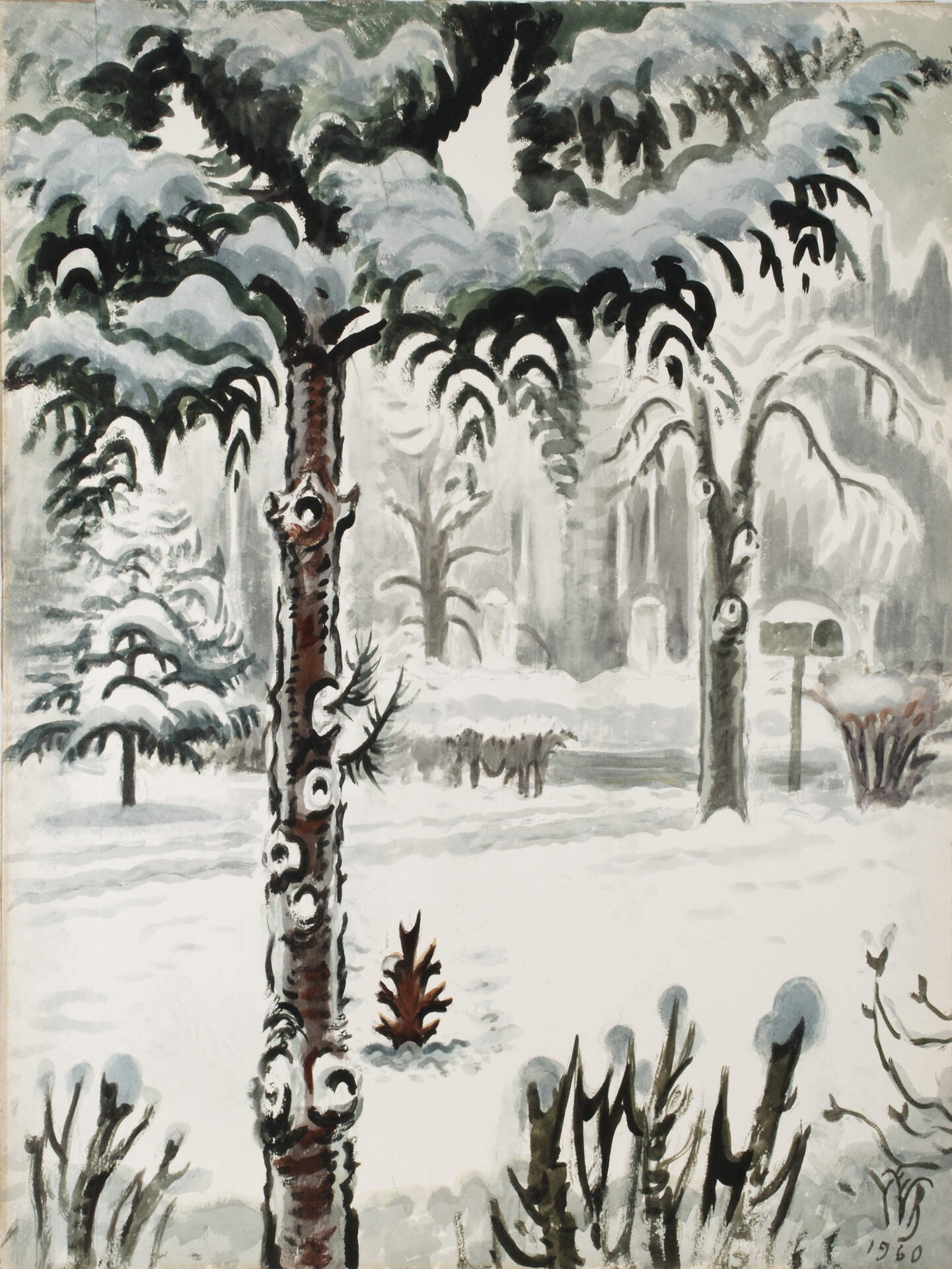Charles E. Burchfield (1893-1967)Constant Leaf, also known as The Steadfast Leaf
1960
watercolor and graphite on paper
39 x 29 1/4 inches
Burchfield Penney Art Center, Estate of Dr. Edna M. Lindemann, 2007
Painted in 1960, The Constant Leaf is Charles E. Burchfield’s tribute to a single oak leaf that remained improbably upright in a neighbor’s lawn through the harsh winter of 1957–58. Anchored over an inch into the frozen ground, the leaf withstood every storm, becoming a quiet yet powerful symbol of endurance and spiritual resilience for the artist during what he called his “asthma years.” Observed daily from his window and later preserved in a book by his wife Bertha, the leaf served as a metaphor for holding fast in the face of affliction. Merging memory, observation, and inward reflection, the painting captures Burchfield’s deep belief in the poetic truth found in everyday natural phenomena.
On December 22, 1957, he wrote in his journal:
I don’t know when I first noticed the oakleaf in Cottrell’s yard—but I think it was during a snowstorm in early November—Somehow it landed in such a way that it stands upright, about midway between the spruce tree outside our window and the chestnut tree—Repeated gales and snows have failed to dislodge it, there it stands, a dark sienna imp-like thing defying the elements to move it. It has become a symbol to me—a friendly little creature that tells me to likewise stand firm and hold on, through all the moments of despair and doubt—I think of it as a little friend—I look for it in the morning, and watch it from time to time during the day. During a gale it leans this way and that, but after it is all over, there it stands erect, immovable, a symbol of hope and courage—On sunny days it is a light sienna, on gray days a dark sepia—
